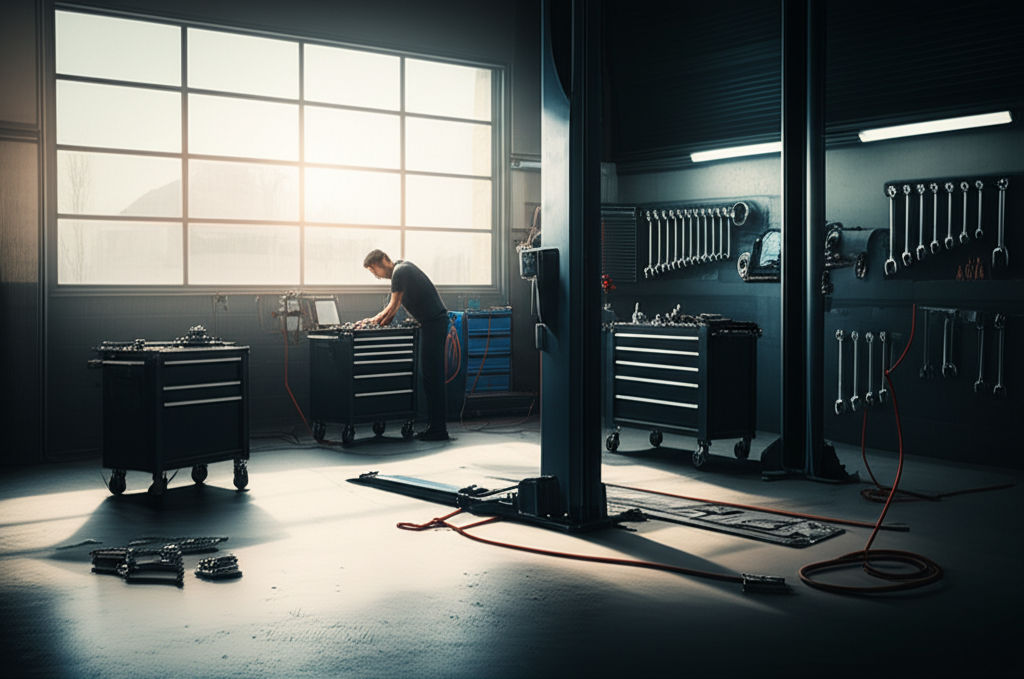Emergency Funds: Your Financial Safety Net
Ellie Moore

Photo: Emergency Funds: Your Financial Safety Net
Emergency Funds: Your Financial Safety Net
In life, the unexpected happens a sudden job loss, an unforeseen medical expense, or an urgent car repair. These events can shake your financial stability, leaving you scrambling to make ends meet. That’s where an emergency fund becomes your ultimate safety net. Building and maintaining one can give you the peace of mind and financial security to face life’s uncertainties without derailing your financial goals.
In this comprehensive guide, we’ll explore what an emergency fund is, why it’s essential, how to build one, and practical strategies to ensure it works effectively for you.
What Is an Emergency Fund and Why Do You Need It?
An emergency fund is a reserve of money set aside specifically for unexpected expenses or financial emergencies. Unlike general savings, this fund serves as a cushion to help you navigate financial disruptions without resorting to high-interest debt, such as credit cards or payday loans.
Key Benefits of an Emergency Fund:
- Financial Security: An emergency fund acts as a buffer, helping you stay afloat during tough times.
- Stress Reduction: Knowing you have money set aside for emergencies can significantly reduce financial anxiety.
- Avoiding Debt: With a well-funded reserve, you can avoid taking on debt to cover unexpected costs.
- Flexibility: It allows you to make better decisions, like leaving a toxic job without fearing financial ruin.
How Much Should You Save in an Emergency Fund?
Determining the right amount to save depends on your unique circumstances, including your income, lifestyle, and expenses.
General Guidelines for Emergency Fund Goals:
- Three to Six Months of Living Expenses: Most financial experts recommend saving enough to cover essential expenses for three to six months.
- Higher Target for Self-Employed or Freelancers: If your income is irregular, aim for six to twelve months of expenses.
- Low-Income Households: Start small by saving $500 to $1,000 as a starter fund, then gradually build up.
Pro Tip: Use budgeting tools or apps to calculate your monthly essential expenses (e.g., rent/mortgage, utilities, groceries, and insurance) and set realistic savings goals.
How to Build an Emergency Fund from Scratch
Starting an emergency fund may feel overwhelming, but with the right strategies, it’s entirely achievable.
Step 1: Assess Your Finances
- Review your income, expenses, and debts.
- Identify areas where you can cut back to free up money for savings.
Step 2: Set a Realistic Savings Goal
- Decide how much you need to save and set a timeline to achieve it.
- Break your goal into smaller, manageable chunks (e.g., $100 per month).
Step 3: Automate Your Savings
- Set up automatic transfers to a dedicated savings account.
- Treat this as a non-negotiable expense, just like paying rent or utilities.
Step 4: Earn Extra Income
- Take on a side hustle, sell unused items, or leverage your skills to generate additional income.
Step 5: Store Funds in an Accessible Account
- Use a high-yield savings account for your emergency fund. This ensures your money is safe, accessible, and earning interest.
Smart Tips for Managing Your Emergency Fund
- Define What Qualifies as an Emergency
- Only use the fund for true emergencies (e.g., medical bills, urgent repairs).
- Avoid dipping into it for non-essential expenses like vacations or shopping sprees.
- Replenish Immediately After Use
- If you withdraw funds, prioritize replenishing the account as soon as possible.
- Review and Adjust Regularly
- Periodically reassess your savings goal to ensure it aligns with your current expenses and lifestyle.
- Avoid Mixing Funds
- Keep your emergency fund separate from other savings to avoid accidental spending.
Real-Life Examples of Emergency Fund Success
Case Study 1: Sarah Avoids Credit Card Debt
Sarah, a single mother, faced a sudden car breakdown that required $2,000 in repairs. Thanks to her emergency fund, she was able to pay for the repairs upfront, avoiding high-interest credit card debt.
Case Study 2: John’s Career Pivot
John was laid off unexpectedly but had saved six months’ worth of expenses. His emergency fund gave him the financial flexibility to search for a new job without rushing into the first offer he received.
Common Myths About Emergency Funds
Myth 1: I Don’t Earn Enough to Save
Even small contributions add up over time. Start with $10 or $20 a week it’s better than nothing.
Myth 2: I’ll Always Have Access to Credit
Relying on credit cards or loans during emergencies can lead to long-term debt. An emergency fund keeps you financially independent.
Myth 3: I Can Use My Investments Instead
Investments are subject to market risks and may not be easily liquidated in emergencies. Your emergency fund should remain liquid and secure.
Frequently Asked Questions (FAQs)
1. Where Should I Keep My Emergency Fund?
A high-yield savings account is ideal because it offers accessibility and a modest interest rate. Avoid tying up your emergency fund in long-term investments.
2. Can I Have More Than One Emergency Fund?
Yes! Some people prefer to have separate funds for different emergencies (e.g., medical expenses vs. job loss).
3. What If I Need to Pause My Contributions?
It’s okay to pause temporarily if you’re facing financial hardship. Resume saving as soon as your situation improves.
Conclusion: Take Action Today
An emergency fund is not just a financial tool it’s a lifeline that provides stability and peace of mind. Start small, be consistent, and prioritize building your financial safety net.
Are you ready to take control of your financial future? Share your thoughts or experiences in the comments below, and don’t forget to explore our related articles for more actionable tips!
Finance & Investment
View All
April 30, 2025
Jio Finance Share Price UpdateUnlock organic growth with expert SEO content. Build authority, improve rankings, and drive traffic by leveraging Google's E-E-A-T principles for lasting succes...
Ellie Moore

May 11, 2025
Best Auto Financing Options 2025Go beyond keywords! Learn to create expert SEO content that builds authority, earns trust, and secures top search rankings. Your guide to digital dominance.
Ellie Moore

May 18, 2025
Ford Finance Login Help GuideUnlock online success with expert SEO content. Learn why it's non-negotiable for boosting rankings, building trust, and engaging your audience effectively.
Ellie Moore

November 20, 2024
How to Improve Your Credit Score in 3 MonthsBoost your credit score in just 3 months! Learn proven strategies to improve your financial standing. Discover tips for managing debt, building credit, and monitoring your progress. Start now!
Ellie Moore

October 30, 2025
Yahoo Finance S&P 500 Index UpdateMaster expert SEO content for 2025 search dominance. Create valuable, E-E-A-T-aligned content to boost rankings, build trust, and stand out.
Ellie Moore

May 24, 2025
Motorcycle Finance Calculator 2025Build online authority with expert SEO content. Learn to create valuable, trustworthy information that ranks higher and drives organic traffic.
Ellie Moore
Insurance
View AllLearn how liability insurance shields businesses from financial risks and legal challenges. Secure your company's future today!
Ellie Moore
Learn what umbrella insurance covers and who benefits from it. Secure your financial future with added protection.
Ellie Moore
Find top-rated car insurance for superior coverage & peace of mind. Our guide helps you compare options & secure your ideal policy.
Ellie Moore
Switching insurance? Learn key considerations to find the best new provider while avoiding coverage gaps.
Ellie Moore
Protect your small business from cyber threats with essential cyber insurance. Learn why it’s critical in today’s digital age.
Ellie Moore
Unlock comprehensive protection with National General Insurance Plans. Our guide helps policyholders & risk managers make informed decisions to safeguard assets...
Ellie Moore
Education
View AllLearn key strategies for creating inclusive classrooms. Discover how to foster equality, engagement, and a sense of belonging for every student.
Read MoreMicro-credentials are on the rise! Discover how they provide fast, focused skills for today’s learners and reshape education.
Read MoreDiscover how flipped classrooms work and why they’re becoming popular. Learn the key benefits of this innovative teaching approach.
Read MoreResearch universities play a key role in advancing knowledge. Explore how they drive innovation, discovery, and societal progress.
Read MoreOnline homeschooling communities are growing fast. Explore how they provide support, resources, and a sense of belonging to families worldwide.
Read MoreSocial skills training is key for kids with autism. Learn practical strategies to improve social interaction and communication in children with ASD.
Read MorePopular Post 🔥
View All
1
2
3
4
5
6
7
8
9
10
Health






Automotive
View All
August 12, 2025
STS Automotive Denver Services You Can Trust
Searching for trusted used cars in Denver? STS Automotive specializes in affordable vehicles, including salvage titles, ensuring value & peace of mind.

July 13, 2025
Driven Automotive Success Stories You Should Know
Explore compelling automotive success stories! Learn how Ford, GM, and others overcame challenges with resilience and innovation to redefine mobility.

August 5, 2025
Better Business Bureau Wiygul Automotive Burke Review
Searching for a reliable auto repair in Burke, VA? Explore Wiygul Automotive's BBB review & understand how BBB ratings ensure you find a trusted mechanic.

February 13, 2025
Car Photography: Pro Tips for Stunning Shots
Capture stunning automotive photos with these expert tips. Learn techniques to showcase cars in the best light and angles. Ready to snap?

July 15, 2025
Choosing The Best Automotive Machine Shop Nearby
Your engine deserves expert care. Discover how to choose a top automotive machine shop for precision repairs, rebuilding, and performance.

July 24, 2025
How To Choose The Best Automotive Wire For Repairs
Choose the right automotive wire for safe, lasting repairs. Our guide demystifies gauges, insulation & more for reliable vehicle electrical systems.

















